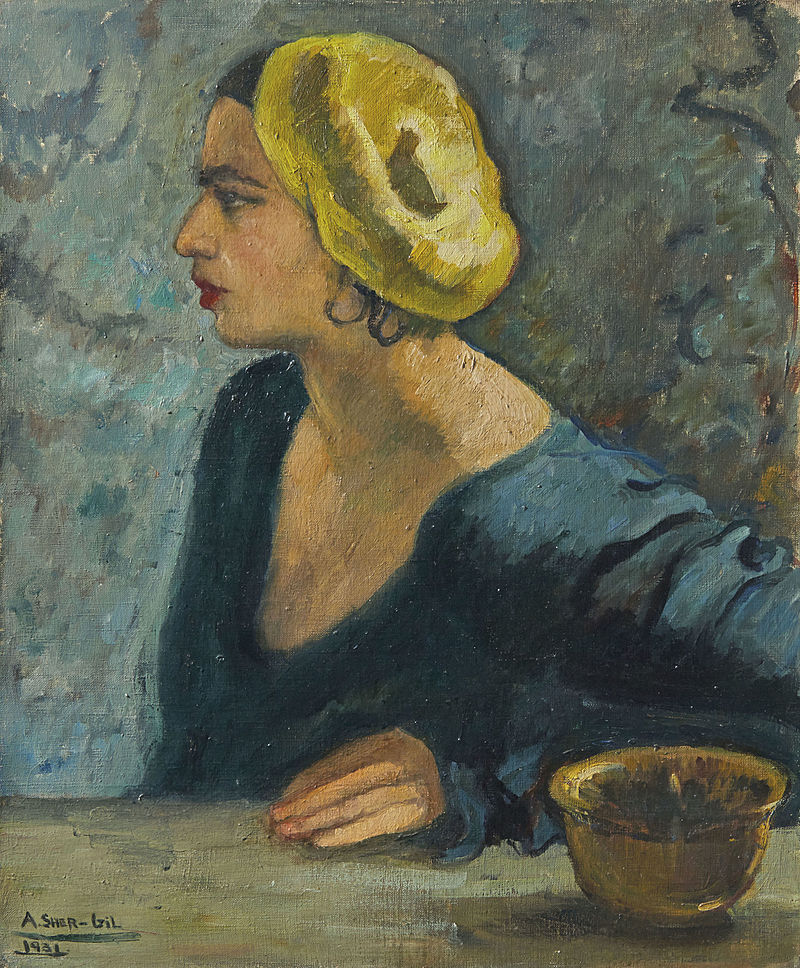Movement/Style: A mixture of Western modernism and traditional Indian art styles
Country: Hungary and India
Years: 1913 – 1941
Well, who was she?
Amrita Sher-Gil was a Hungarian-Indian painter who was born in Hungary and moved to India later in her life. She’s known as a pioneer of modern Indian art, and is one of the most influential Indian women artists in history. Her work portrayed the lives of women, especially Indian women, and her style evolved from Western influences to classical Indian influences.










